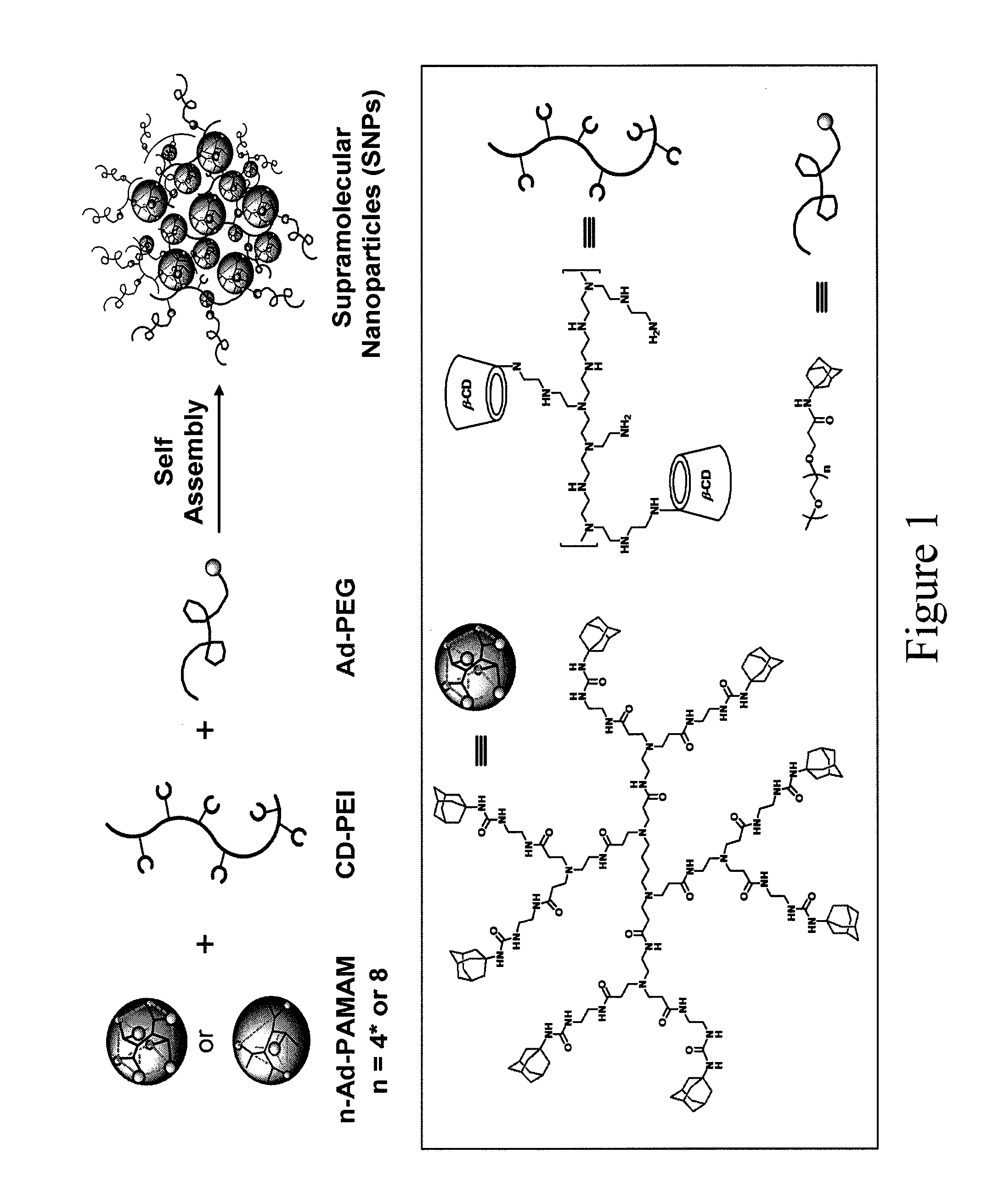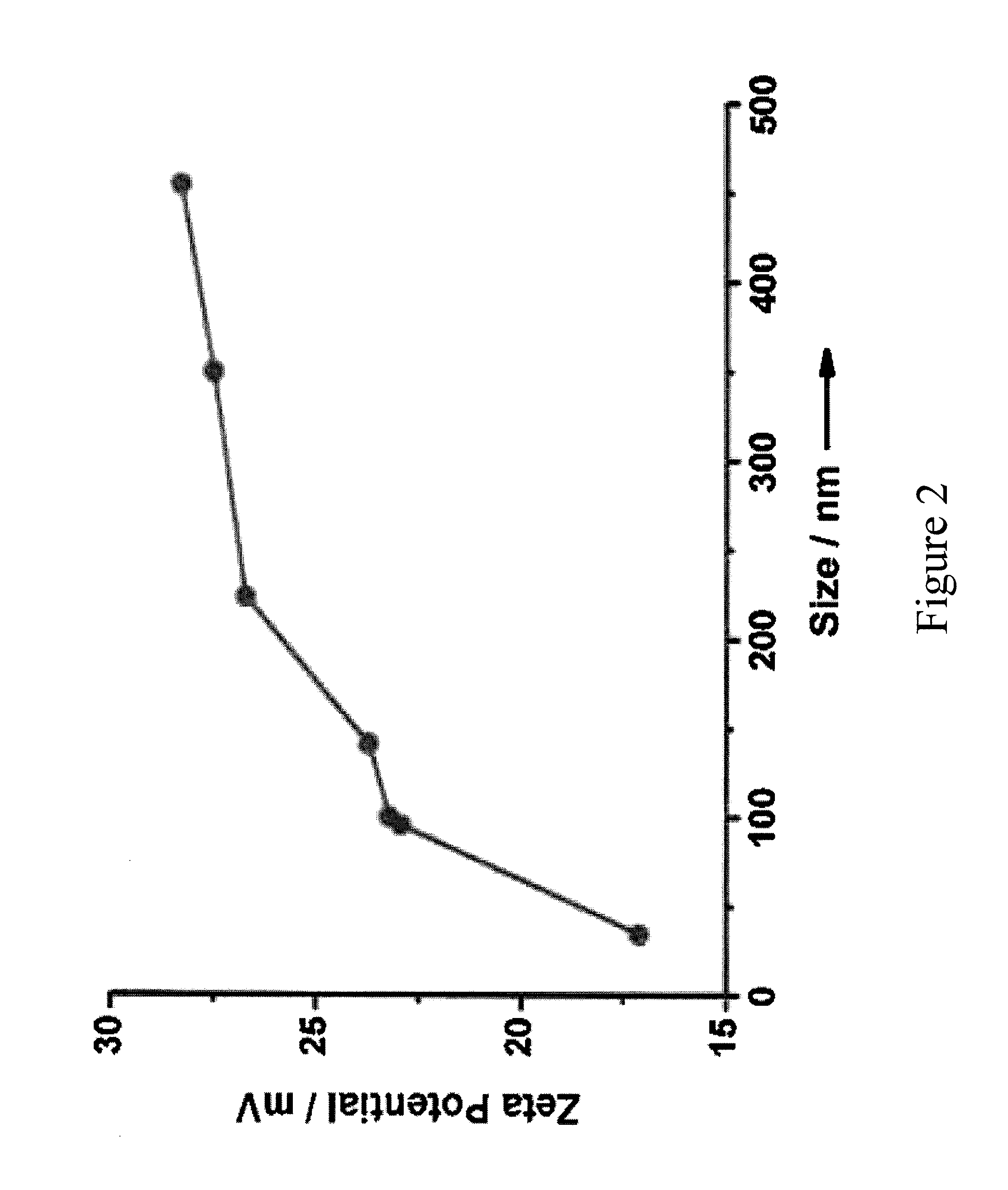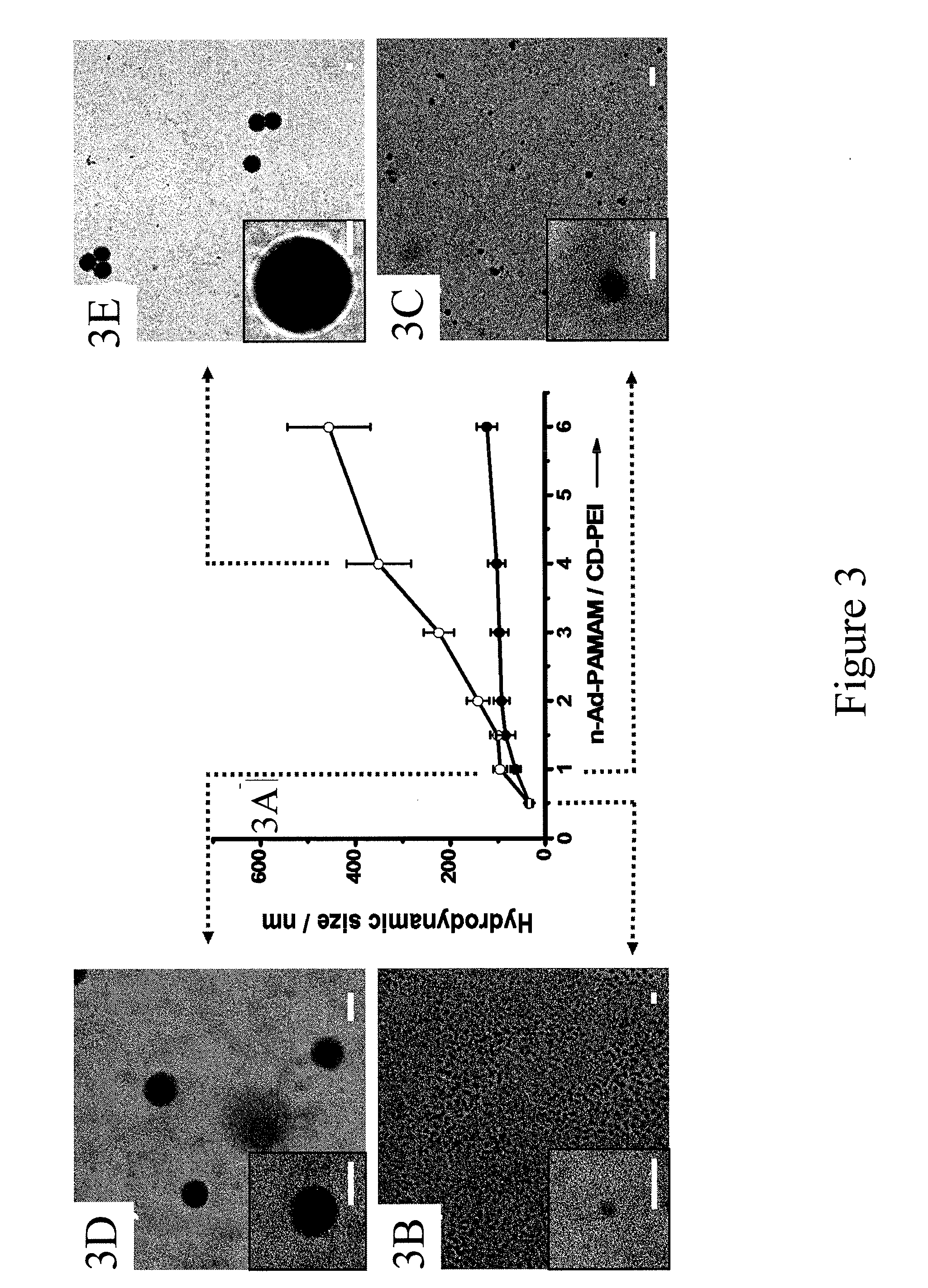Supramolecular approach for preparation of size controllable nanoparticles
a nanoparticle, size control technology, applied in the direction of peptide/protein ingredients, dna/rna fragmentation, powder delivery, etc., can solve the problems of poor bio-clearance, poor proportion of work, and use of components
- Summary
- Abstract
- Description
- Claims
- Application Information
AI Technical Summary
Benefits of technology
Problems solved by technology
Method used
Image
Examples
example 1
Preparation of Supramolecular Nanoparticles (SNPs)
General
[0124]Reagents and solvents were purchased from Sigma-Aldrich (St. Louis, Mo.) and used as received without further purification otherwise noted. Branched polyethylenimine (PEI, MW=10 kD) was purchased from polysciences Inc (Washington, Pa.). Polymers contain primary, secondary, and tertiary amine groups in approximately 25 / 50 / 25 ratio. 1st-generation polyamidoamine dendrimer (PAMAM) with 1,4-diaminobutane core and amine terminals in 20% wt methanol solution was purchased from Dendritic Nanotechnologies, Inc (Mount pleasant, MI). 1-Adamantanamine hydrochloride and β-cyclodextrin (β-CD) were purchased from TCI America (San Francisco, Calif.). N-hydroxysuccinimide (NHS) functionalized methoxyl polyethylene glycol (mPEG-NHS, MW=5 kD) was obtained from NANOCS Inc (New York, N.Y.). 1,4,7,10-Tetraazacyclododecane-1,4,7,10-tetraacetic acid mono(N-hydroxysuccinimide ester) (DOTA-NHS) was purchased from Macrocycles (Dallas, Tex.). 6-Mo...
example 2
Gene Delivery by Supramolecular Nanoparticles (SNP)
General
[0152]Reagents and solvents were purchased from Sigma-Aldrich (St. Louis, Mo.) and used as received without further purification otherwise noted. Branched polyethylenimine (PEI, MW=10 kD) was purchased from Polysciences Inc. (Washington, Pa.). Polymers contain primary, secondary and tertiary amine groups in approximately 25 / 50 / 25 ratio. 1st-generation polyamidoamine dendrimer (PAMAM) with 1,4-diaminobutane core and amine terminals in 20% wt. methanol solution was purchased from Dendritic Nanotechnologies, Inc (Mount pleasant, MI). 1-Adamantanamine (Ad) hydrochloride and b-cyclodextrin (β-CD) were purchased from TCI America (San Francisco, Calif.). N-hydroxysuccinimide (SCM) and maleimido (MAL) hetero-functionalized polyethylene glycol (SCM-PEG-MAL, MW=5 kD) was obtained from NANOCS Inc (New York, N.Y.). Phosphate-buffered saline (PBS, 1×, pH 7.2±0.05) for sample preparation, UltraPure™ 10×TBE buffer (including 1 M Tris, 0.9 M...
example 3
Combinatorial Approach to Transfection Optimization
[0174]A rapid developmental pathway (FIG. 20) toward highly efficient gene delivery agents is demonstrated that leverages the powers of (i) a combinatorial synthetic approach (FIG. 20) based on supramolecular assembly and (ii) an automated microreactor. Unlike the slow and multistep syntheses employed for producing the existing gene-delivery materials with limited diversity, the supramolecular approach (FIG. 20) enables a convenient, flexible and modular method for generating a combinatorial library of DNA-SNPs (1), in which a broad structural / functional diversity covering the size variation, uniformity, surface chemistry and DNA loading capacity was programmed into individual DNA-SNPs (1) by systematically altering the mixing ratios of five functional molecular building blocks (2-6) and DNA plasmid (7). To test general applicability of this approach, DNA plasmids encoded with either enhanced green fluorescent protein (EGFP, 7a) or ...
PUM
| Property | Measurement | Unit |
|---|---|---|
| Size | aaaaa | aaaaa |
| Size | aaaaa | aaaaa |
| Force | aaaaa | aaaaa |
Abstract
Description
Claims
Application Information
 Login to View More
Login to View More - R&D
- Intellectual Property
- Life Sciences
- Materials
- Tech Scout
- Unparalleled Data Quality
- Higher Quality Content
- 60% Fewer Hallucinations
Browse by: Latest US Patents, China's latest patents, Technical Efficacy Thesaurus, Application Domain, Technology Topic, Popular Technical Reports.
© 2025 PatSnap. All rights reserved.Legal|Privacy policy|Modern Slavery Act Transparency Statement|Sitemap|About US| Contact US: help@patsnap.com



